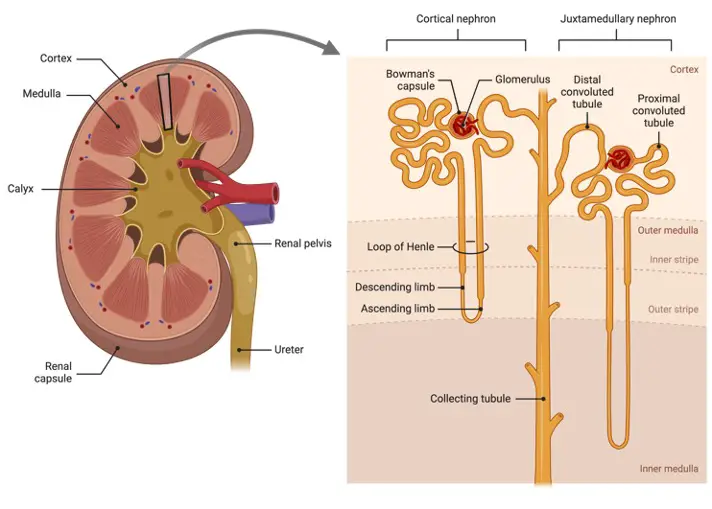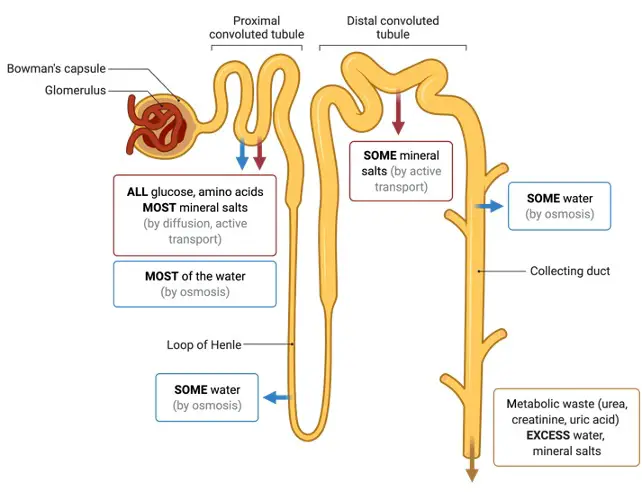Table of Contents
Animal Water Regulation
Homeostatic control, a defined habitat, and how evolution and natural selection force a species to adapt to its surroundings are all important factors in a species’ survival. These natural principles are crucial in more severe environments. These kinds of evolutionary changes are detailed in the following sections.
Animal Water Regulation and Anatomy
These sorts of changes in an organism have an impact on its physical structure. For example, birds living on islands far from their native environment may develop longer wings over time as a result of their isolation.
Animal Water Regulation and Physiology
Physiological changes are changes in an organism’s actual biological processes. For example, mammals have evolved different limbs to suit how they operate in different environments over millions of years, such as the nimble fingers that a human has for skills like typing via the adapted pentadactyl limb that we’ve.
Animal Water Regulation and Behaviour
Changes in how an organism reacts to and interacts with its surroundings. The kangaroo water rat is an example of this, since it hibernates during hot parts of the day to preserve water. This is an example of a behavioural adaptation in response to the environment’s current conditions. This is known as dormancy, and it occurs when all superfluous actions and reactions (such as moving) are reduced in order to save the limited energy and food available to them.
Organisms in such settings must pay special attention to how they manage their body’s water supply. Here’s why our bodies lose water in so many different ways. Surprisingly, we lose a lot of water from our daily intake through breathing, since when we exhale, water also comes out with the waste CO2.
Why Adaptation?
Overall, these modifications are required for an organism and its species to thrive in a given habitat. Animals (and plants) that dwell in an aquatic environment have adapted to their surroundings over time. This would be an issue for other creatures, and you may notice that your hands and feet wrinkle if you stay in the bath or swim underwater for an extended length of time. Because osmosis occurs between you and the aquatic environment, this is the case.
Because the concentration gradient of osmosis must balance out due to the greater concentration in the external environment, the cells in our hands and feet become turgid (a higher than normal concentration of water). With this in mind, aquatic animals must practise osmoregulation to maintain the optimal internal environment of their bodies.
Keep in mind that osmosis will continue until the internal and external environments are in balance (isotonic concentration). Our genomes are adapted to dry settings, so this departure from the usual might imply that we are less suited to living in a water environment since we are no longer acclimated to it, unlike our ancient relatives.

Because their bodies are hypotonic in relation to their external environment, organisms in freshwater habitats face the challenge of continual osmosis of water into their bodies. This implies that water will continue to permeate into the fish until the two habitats have reached an isotonic concentration.

Evolutionary adaptations have addressed this difficulty since the fish would not be able to function with such a high quantity of water in their system. The kidneys that deal with water uptake are well-suited to the job because the glomerulus of the kidney has a high surface area that helps to lower the concentration of water in the blood. Because these renal tubules enable large-scale ion movements out of the circulation, the organism must actively transport some essential ions like salt back into the bloodstream.
This osmoregulation may be compared to how glycogen is stored in the human kidney, because the homeostatic mechanisms in this area are largely responsible for ensuring that the circumstances inside the organism are suitable for the demands placed on it. Due to the pressure created by the water, excess water within such a creature would harm the internal organs beyond repair by ruining the cell membrane and organelles.
Animals that dwell in the ocean have the reverse difficulty, since the salty water means that the water concentration is lower than that of most creatures. As a result, the organism is hypertonic to its external environment (has a greater water content), and it must re-absorb water in order to maintain its health. These animals have benefited from evolutionary adaptation, and their kidneys have been physically changed through time to ensure their long-term survival.
In contrast to freshwater creatures, such species’ glomeruli have a considerably lower surface area since the requirement to expel ions into the external environment is not as great, and most water must be kept for survival. Because the salt-water environment may be consumed, and therefore is not as scarce as it would be for a freshwater creature, there is no need for re-absorption.
To continue to operate correctly and efficiently, these organisms must maintain an ideal water content in their internal environment. Water is rare in more severe conditions, such as the desert, and water must be conserved in case of need, which is why camels have humps. Sweat may lose a lot of water, especially in extremely hot conditions or during hard activity. We also lose a lot of water through urine and faeces.
Many of our biological functions also require water, therefore it is an exhaustible resource for these ongoing activities. When the temperature gets hot, certain species, such as the kangaroo rat, go into extended periods of hibernation, which causes the rat to lose more water through respiration than it can afford.
The rat sleeps underground under wet circumstances, where the concentration of water in the air and the rat’s lungs is at its lowest, allowing the least amount of water to escape to the outside world. All of these adaptations are meant to help organisms thrive more comfortably in their current environment, and without them, some species on the planet may not have made it this far.







